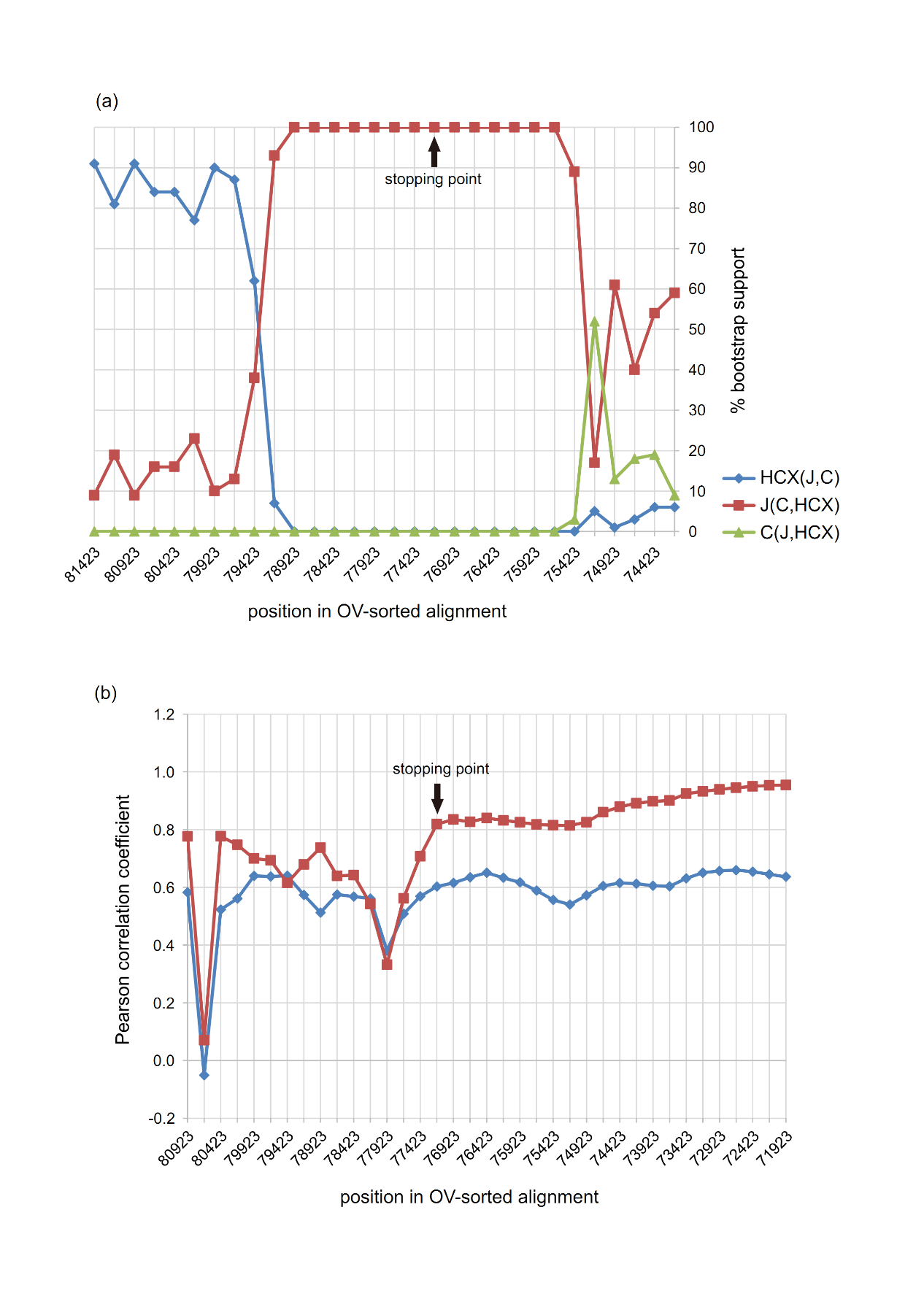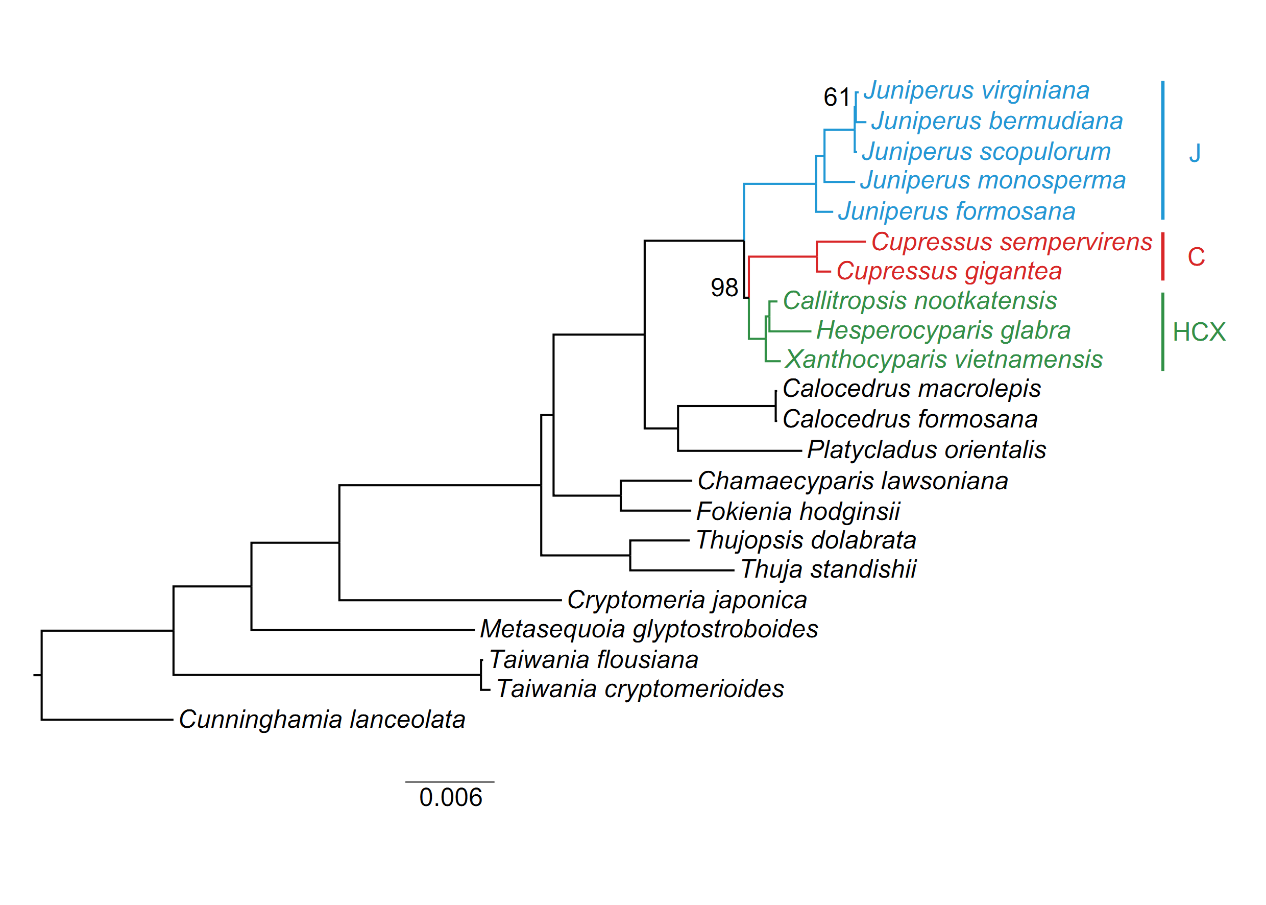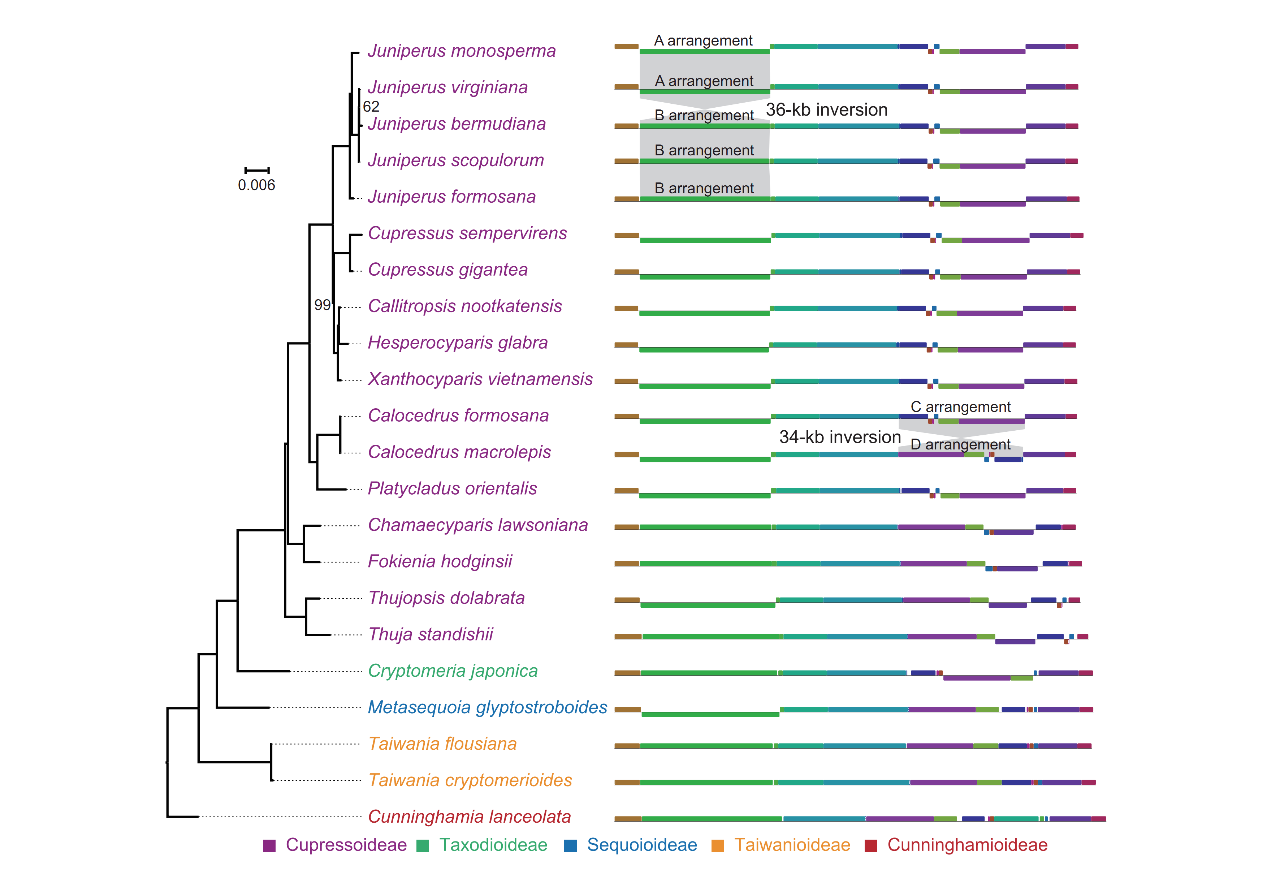The cypress family, Cupressaceae, contains about 140 species in 32 genera with worldwide distribution. Recent molecular phylogenetic studies have divided this family into seven subfamilies. Cupressoideae, the largest subfamily of Cupressaceae, contains about 100 species in 13 genera. Species of Cupressoideae are important in the Northern Hemisphere forest, and many are constructive and dominant species. Many species are also economically important as timber sources.
The phylogenetic relationships among most genera of Cupressoideae have been resolved. However, the phylogenetic relationships among Juniperus (J), Cupressus (C) and the Hesperocyparis-Callitropsis-Xanthocyparis (HCX) subclades of Cupressoideae are controversial.
Prof. YI Tingshuang's group and Prof. LI Dezhu’s group from Kunming Institute of Botany, Chinese Academy of Sciences (KIB/CAS), together with Prof. Shu-Miaw CHAW’s group from Biodiversity Research Center, Academia Sinica (BRCAS) reconstructed phylogenetic relationships of Cupressoideae and discussed plastome evolution based on 22 plastomes.
The research revealed the plastid protein-coding gene matrix revealed that J and C have much longer stem branches than those of HCX. Three subclades of J-C-HCX were estimated to have experienced ancient rapid divergence within a short period (1.15 My). Long-branch attraction could be the major obstacle in resolving their relationships. Data filtering by strictly removing unreliable aligned regions and removing substitution saturation genes and rapidly evolving sites could significantly reduce branch lengths of subclades J and C and recovered a relationship of J (C, HCX).
In addition, using coalescent phylogenetic reconstruction could elucidate the LBA artifact and recovered J (C, HCX). However, some valid methods for other taxa were inefficient in alleviating the LBA artifact in J-C-HCX. Our results indicated that different strategies should be carefully considered and justified to reduce LBA in phylogenetic reconstruction of different groups. The resolution of phylogenetic relationships among three subclades provides good examples and ideas for studying difficult phylogenetic relationships.
This study entitled “Multiple measures could alleviate long-branch attraction in phylogenomic reconstruction of Cupressoideae (Cupressaceae)” has been published in Scientific Reports (https://www.nature.com/articles/srep41005).
Phylogenomics, on one side, reconstructs phylogenetic relationships using omic-data; on the other side, explores genome evolution under the phylogenetic framework. The plastomes of Cupressoideae possess diversified structural variations, and are good materials for exploring evolutionary pattern of plastome and related driving factors. The research group has in-depth studied the plastome evolution in this subfamily. Researchers have also revealed with a broader taxon sampling for Cupressoideae, semiquantitative PCR and reads mapping analyses together validated the co-existence of trnQ-IR-mediated isomeric plastomes by the way of homologous recombination in eight of the ten sequenced Cupressoideae species.
Within Calocedrus macrolepis, the study discovered a new type of isomeric plastomes that was likely derived from homologous recombination mediated by an 11-bp repeat.
In addition, the isomeric plastomes were also detected in 176 individuals from nine wild populations of four Cupressoideae species. These results showed that the ubiquitous co-existence of isomeric plastomes and the shift of the relative abundance of major and minor forms contributed to the diversification of Cupressoideae plastomic structural variation.
The study of isomeric plastomes in Cupressoideae has expanded people’s understanding of plastomic structural variation in plants.
This research entitled “Insights into the existence of isomeric plastomes in Cupressoideae (Cupressaceae)” has been published in Genome Biology and Evolution (https://academic.oup.com/gbe/article/3738280/Insights-into-the-Existence-of-Isomeric-Plastomes).
These two studies were funded by the National Key Basic Research Program of China (2014CB954100-01), the iFlora Cross and Cooperation team (31129001), the Applied Fundamental Research Foundation of Yunnan Province (2014GA003), the Talent Project of Yunnan Province (2011CI042) and the Ministry of Science and Technology, Taiwan (MOST 103-2621-B-001-007-MY3).

Figure 1: OV-sorting analyses. (Image by QU Xiaojian)

Figure 2: Phylogeny of Cupressoideae by maximum likelihood analysis of the PCG-Iss-73 matrix.(Image by QU Xiaojian)

Figure 3: Comparison of plastomic organization among 22 Cupressaceae species. (Image by QU Xiaojian)

Figure 4: Detection of isomeric plastomes with C (IPWC) or D (IPWD) arrangement in Calocedrus macrolepis. (Image by QU Xiaojian)
Contact:
Germplasm Bank of Wild Species
Kunming Institute of Botany, Chinese Academy of Sciences
Prof. Dr. YI Tingshuang
Email: tingshuangyi@mail.kib.ac.cn
(Editor:YANG Mei)




